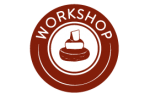Maine Cheese Guild Events Coordinator: 2020
The Events Coordinator is a part time, year round, independent contractor position with the Maine Cheese Guild. The purpose of this position is to coordinate and organize Maine Cheese Guild events and promote these events to the general public. Events include the Agriculture Trade Show (January 14, 15, and 16), the annual Maine Cheese Festival (September 13 at Location TBD), Maine Cheese Guild booth at MOFGA’s Common Ground Fair (September 25 – 27), and the Guild’s statewide Open Creamery Day (October 11).
Responsibilities
The Maine Cheese Festival is a key annual fundraiser for the Maine Cheese Guild. The Guild expects roughly 2,000 people to attend each year and the job of the coordinator is to ensure that the event goes smoothly and both the guests and vendors go home happy. The festival is a large production with approximately 50 vendors including beer, wine and spirits plus food trucks in addition to the cheese makers and other artisan food vendors in attendance. In order to be successful, the festival relies on 50 to 80 volunteers and the involvement of the town and/or property owner for the setting of the festival. Excellent communication and organizing skills are a must. Familiarity with Maine cheese makers and food producers is key. The coordinator will also need to be skilled with software including Eventbrite, Square, Adobe Illustrator or Photoshop, and savvy with various social media platforms.
This position will regularly meet with or report to the President and/or Vice President of the Guild and submit in-person progress reports for the general Guild membership at select regularly scheduled Guild meetings. The contractor will work with volunteer committees as well as the Website Coordinator.
Tasks:
• Communication and public relations/media outreach for events, including writing press releases and coordinate media and Public Relations to all MCG events via print, radio, tv, magazines and other news outlets
• Attend and manage events on site on event days
• Coordinate site management aspects such as ticketing and entrance flow, electrical needs, tent space allocation, Wi-Fi or ATM usage, alcohol permitting, town ordinances, parking details and all communication with participants
• Procurement of sponsorship agreements and partnerships including fundraising
• Coordinate and schedule volunteers and paid staff as needed
• Record and track income and expenses of events
• Management of Guild materials for events
• Build on the foundation of processes, documents and record-keeping established by past coordinators•Coordinate social media outreach for the events and communicate with Website Coordinator to keep the Maine Cheese Guild website updated and coordinate promotional material and announcements.
Compensation:
The independent contractor should anticipate an average of 5 – 7 hours of work per week at the beginning of the year and closer to 20+ hours of work for the weeks leading up to the events, with the Festival being the busiest event with the most amount of work. In the two weeks before the festival, full time hours will be necessary to complete the festival. This contract is open for bids and proposals should be submitted with a budget detailing a proposed breakdown of time and costs for the tasks listed above.
The independent contractor will be compensated on a monthly basis through invoicing to the Guild President along with a summary of work performed which will be submitted to the Treasurer for payment.
As an independent contractor, it is expected that the Coordinator will work primarily from their personal office, using their personal computer and personal phone to accomplish tasks. The Guild will reimburse the cost of supplies necessary for the job.
The term of the contract is for one calendar year. The contract may be up for renewal annually, based on evaluation by the Board and availability of funds.
Required Skills:
• Communication and PR/Media experience
• Prior event planning experience
• Organizational and record-keeping skills
• Time-management
• Excellent interpersonal skills
• Design skills preferred
• Familiarity with the Maine Cheese Guild
• Fundraising
Contract proposals should be submitted in writing to Jessie Dowling, the President of the Maine Cheese Guild (address below) by November 30th, 2019.
The final decision for the award of the contract will be made within 30 days of the submission deadline by the Board of the Maine Cheese Guild. Three professional references must be included at the time of contract proposal submission.
Maine Cheese Guild
℅ Jessie Dowling, President
35 Townhouse Rd.
Whitefield, ME 04353
Or via Email:
[email protected]
Questions? Call: Jessie Dowling:
(207) 465-5255
View this RFP on Google Docs


